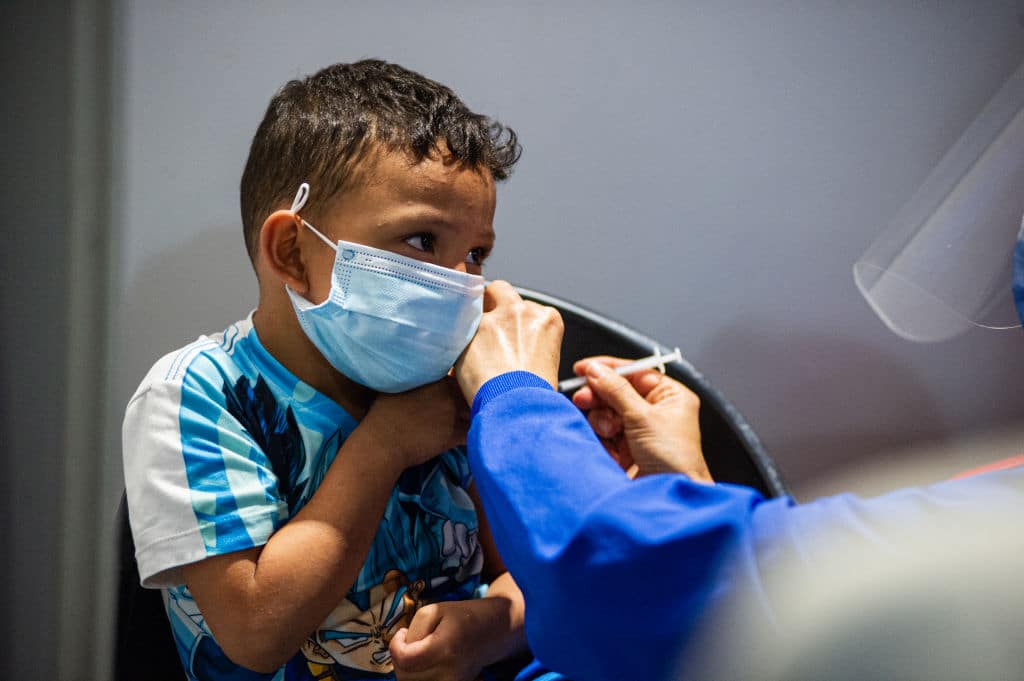TOPLINE
According to a new study, Covid placed in the top 10 leading causes of death for children of all age groups, but there are several precautions (like vaccines, masks and isolation), which effectively protect against the virus.
KEY FACTS
The study, published in the JAMA Network on Monday, found Covid was a leading cause of death in children and adolescents and caused more deaths than any other vaccine-preventable disease.
According to the Peterson-KFF Health System Tracker, Covid was the third- leading cause of death in the U.S. each year from 2020 to 2022, and according to the JAMA study, Covid mortality between August 1, 2021 and July 31, 2022 ranked in the top 10 leading causes of death for the age group between infants and 19-year-olds.
Between January 2020 and January 21, there have been 1,098,583 Covid-related deaths in the U.S., with children (Americans 18 and under) making up over 1,600 of those cases, according to the Centers for Disease Control and Prevention.
TangentA study published in the Lancet found although Covid infections due to the omicron variant (the most wide-spread Covid strain) were more transmissible among children, they were less deadly than infections caused by the previous variant.
COVID VACCINES AND BOOSTERS APPROVED FOR CHILDREN
The CDC included children ages six months to five years in their recommendation for Covid vaccines in June 2022. Pfizer-BioNTech and Moderna are the only vaccines authorized and approved for use in children aged six months and older by the Food and Drug Administration. However, those 12 and up can receive the Novavaxvaccine. The Johnson & Johnson vaccine is only approved for people 18 years and up. Bivalent boosters (booster shot that protect against the original Covid variant and the now dominant omicron variant) became available for anyone six months and older in December 2022. Bivalent boosters are proven to be more effective at protecting against Covid, severe symptoms and hospitalization than the original monovalent vaccines. Kids aged 6 months through four years who completed a Moderna vaccine series are eligible to receive a Moderna bivalent booster two months after their second dose, and kids five and up who completed the Moderna series can receive either the Moderna or Pfizer-BioNTech bivalent booster two months after their second dose. Those aged six months through five years who are completing a Pfizer-BioNTech vaccine series can only get a Pfizer-BioNTech bivalent vaccine as their third dose. Children six years and up who completed a Pfizer-BioNTech vaccine series can receive either the Pfizer-BioNTech bivalent booster two months after their second dose. Children 12 to 17 years of age who got the Novavax vaccines can get either the Moderna or Pfizer-BioNTech vaccines two months after completing their second dose.
OTHER PRECAUTIONS
- Isolation: Self isolation at home for at least five days for those who test positive for Covid is recommended, as infectious levels are the highest during this time. If someone has to go out in public or be around others in the household, a high-quality mask is advised by the CDC. If symptoms are improving and a fever isn’t present for 24 hours without the use of medicine after the five day period is up, isolation can end and the use of a high quality mask should continue until day 10. However, being around high risk individuals should be avoided until day 11. High risk individuals include those over the age of 65, those with a weakened immune system, those with underlying conditions (like obesity, heart disease and cancer) and pregnant people. The CDC recommends those who aren’t vaccinated to practice social distancing in public, remaining at least six feet away from others. According to a 2022 study, self-isolation and stay-at-home orders were essential in preventing the spread of the virus during the early phases of the pandemic.
- Masks: A study found masks were effective at slowing the spread of Covid. The CDC breaks down mask guidelines based on Covid community levels. For those living in low level communities (places where Covid cases are minimal), masks are not required indoors in public. For medium level communities, it’s recommended high risk people wear high-quality masks or respirators (like the N95) indoors in public. For high level communities, all people should wear high-quality masks indoors in public. Regardless of community level, people with symptoms, those who’ve tested positive for Covid or have come in contact with a positive person should wear a mask indoors. As of April, the CDC no longer requires the use of masks on public transportation. However, it still recommends the use of masks in indoor public transportation situations.
FURTHER READING
Odds of Severe COVID-19 Disease Lower for Children During Omicron Predominance (Killeen Daily Herald)
